For the Newest Issue of Alternate Perceptions, click here. | |||||||||||
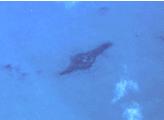 | |||||||||||
 | |||||||||||
 | |||||||||||
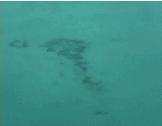 | |||||||||||
The Illustrated Encyclopedia of Native American Mounds & Earthworks — by Dr. Greg Little | |||||||||||
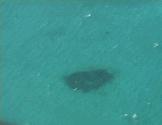 | |||||||||||||
The ARE's Search For Atlantis—2007 Summary: Part One of Three Bermuda Triangle Yields Secrets By Dr. Greg Little Note: The background to the ARE's Search For Atlantis Project can be found in the books, The ARE's Search For Atlantis, Edgar Cayce's Atlantis, and Secrets of the Ancient World. The "Bermuda Triangle" is a vast expanse of islands and ocean covering nearly 500,000 square miles. The term is typically applied to the area enclosed by a triangle starting from Miami, Florida, to Puerto Rico, to Bermuda, and back to Miami. The Bermuda Triangle Organization lists 125 incidents of disappearances (until 2002) of planes and the disappearance of 94 ships/boats within the Triangle, with the first ship report from 1780. A large portion of the Bahamas lies within the Triangle. The small Bahamas island of Bimini, lying only 50 miles from Miami, has been the location of several ship and plane disappearances and has also received intense scrutiny for possible archaeological remains. But Andros Island, the largest of the Bahamas islands lying 100 miles from Bimini, has been given little attention by archaeologists or Bermuda Triangle researchers. Bimini lies in what many consider to be the "focal point" of the Bermuda Triangle, but Andros, especially North Andros, is also within the Triangle and has been the location of numerous disappearances. This report, the first of three, focuses on the unexpected discovery of planes linked to the Bermuda Triangle mystery. The Association For Research & Enlightenment's Search For Atlantis Beginning in 1968, intense exploration in the Bahamas was conducted by members of the ARE (Association For Research & Enlightenment) following reports made by Dr. J. Manson Valentine of the discovery of an underwater structure found off Andros and then another stone formation at Bimini. Exhaustive investigations made in recent years by archaeologist William Donato, Dr. Lora Little, and the present author have conclusively shown that the underwater stone structure lying off Bimini is the remains of a ancient harbor. In addition, a similar structure was found at Andros and another harbor was found about a mile from the first Bimini formation in 2006. In late 2006 and in May and June 2007, a series of expeditions were conducted in the Bahamas, which performed extensive side-scan sonar at Bimini as well as near Andros and several areas on the Great Bahama Bank. Results from the side-scan sonar are more fully presented in an August 1, 2007 article. However, the most interesting finds from the sonar and subsequent follow-ups revealed rectangular formations lying in 100 feet of water off Bimini, several unusual stone formations 20+ miles out on the Great Bahama Bank, and the "rediscovery" of an underwater "mass" of fully dressed marble beams, an exquisite marble building apex, marble columns, and numerous huge, rectangular flat slabs of white marble. Gene Shinn, the main skeptic of Bimini, denies marble was present at Bimini. The most puzzling results included the discovery of an underwater wall off a small, uninhabited island North of Andros. This wall was constructed from huge blocks and slabs of limestone. One section of the wall remains partially intact and consists of three-to-five layers of stone blocks. While this research has been conducted under the title of "The ARE's Search For Atlantis," two facts should be noted. First, nothing has been found in the Bahamas that is linked to the "historical" Atlantis. But some archaeological evidence has been found, which leads to the second point. That is, there is genuine evidence pointing to the existence of an unknown, somewhat sophisticated maritime culture operating in the Bahamas during ancient times. Finding more definitive evidence of this maritime culture is our primary focus. Planes & Boat Remains An aerial survey performed over the Great Bahama Bank in June 2007 by Drs. Lora and Greg Little was designed to identify the precise location of previously photographed dark, underwater formations. Many writers, including Charles Berlitz, had published a few photos of these seemingly enigmatic formations suggesting they could be the ruins of buildings. Our aerial survey identified approximately 20 of these formations in an area bounded by the upper 10 miles of Northern Andros extending 45-miles (west) onto the Great Bahama Bank. With the help of Eslie & Krista Brown, Bahamas boat and dive operators, we managed to directly visit all but one of these as well as several others. In addition, we explored a host of small islands and a wide area of North Andros. (An August 1 and September 1 report will detail all of the finds not reported herein. We are awaiting a variety of test results.) One of the largest and most interesting forms visited on the Great Bahama Bank was approximately 35 miles off Andros lying in 20 feet of water. Taking the shape of a dark "eye" with white sand outlining it, the center of the formation showed a round white spot. From the air, it is a stunning view and the formation is nearly 500-feet long. In the white center spot of the formation we found a plane, turned upside down. The plane was completely buried under the sand, but a retractable front landing gear was sticking out from the bottom. It was removed and brought to the surface by Eslie Brown. The "Electrol" gear was subsequently investigated and was probably used on a Cessna 210-J. (Final verification is pending.) Another massive dark spot that was investigated, about 30-miles off Andros and measured at over 500-feet, also takes on the appearance of an eye with a center white spot. The remains of a wooden boat were found in the center with the outline of small, well-polished ballast stone found in the sandy center. A few long pieces of decayed and rotted wood were found in the sand. Because of the discovery of the underwater plane, we subsequently investigated three more crashed plane remains on land on Andros. One, a DC-3, required a several hour trek through dense and muddy mangrove swamps. The plane, as it turned out, was local in origin and its history is known. More wreckage—a tail assembly of a small plane—was found at Red Bays. Locals pulled the remains out of the water many years ago after it came ashore, but no one recalls any investigation of the wreck whatsoever. Several of the plane's ID numbers (N-number) partly remain on the tail. These were: N148xF. The only portion of the "x" that was visible could well have been a "3" and the number "1" was only partly visible. The most intriguing plane found on land was found at Morgan's Bluff. Investigation eventually led us directly to the individual who first recovered it. This man was using a dredge at Morgan's Bluff in 1989 to deepen a channel where a large tanker comes daily to ship water from Andros to Nassau. The man recalled that when he dragged the plane up, there were no human remains in it, so they simply pulled it to the bank (out of the way) and then used a bulldozer to push it into the nearby jungle. No one knew its origin, however, several locals believed that it had crashed into the deep Tongue of the Ocean between Andros and Nassau and gradually drifted until a storm moved it to the Morgan's Bluff area. All outer ID numbers on the plane were gone, destroyed when the aluminum was literally torn to pieces by all of the violent actions subjected on it. However, we managed to find a manufacturer's ID plate on an internal part showing the part was made in 1960. The plane was a 2-engine Beech, similar to Beechcraft made in the 1950s. Preliminary Speculations It must be stressed that a tentative ID has been made on only one of the planes found and we have no idea whatsoever about the identity of the wooden ship remains. The plane found on the Great Bahama Bank appears to be a Cessna and the landing gear is consistent with those used in a Cessna 210-J. The location of the plane's remains is on a line between the "Andros Town" airport and numerous East coast Florida airports. Examination of the master list of plane disappearances published by the Bermuda Triangle Organization shows that a Cessna 210-J disappeared on October 4, 1983 after it left Andros Town for Ft. Pierce, Florida. However, only a positive identification, by uncovering the tail to reveal the plane's N-number, would prove whether this is that plane or not. The N number on the remains of the plane at Red Bays creates an intriguing problem. The clearly visible numbers Nx48xF, added to those that were less clear (N1483F), match a plane reported missing in 1968. On May 29, 1968 a single engine Cessna 172 radioed to Grand Turks that it was low on fuel and then the pilot reported that the engine had stopped. The plane was assumed to have crashed into the water and both the 30-year old pilot and his passenger were missing. Nothing was ever discovered from the plane nor were any bodies found. The wreckage we found at Red Bays, consisting only of the tail section, is consistent with that of a 1966 Cessna 172, the same model that disappeared in 1968. But Grand Turks is more than 400 miles from where we found the plane wreckage. Yet, the northwesterly movement of water through the Old Bahama Channel, to the Santaren Channel, to the Gulf Stream makes this seemingly unlikely event plausible. In addition, no other planes on the list of planes disappearing in the Bermuda Triangle match the numbers we found. The exact identity of the 2-engine Beech plane found at Morgan's Bluff is as yet unknown. Unfortunately, there are at least three disappearances of 2-engine Beech planes in that area that could fit the information we presently have. However, we have two different metal ID tags from parts in the plane wreckage that we are using to base our search upon. More Planes—More Boats A 1980 report on the area near Bimini where the marble was found on the bottom describes three wrecks as present there. However, we cannot find an official record of these in the registries of wrecks kept by the Bahamas. Nor can we find any information on the wooden boat remains on the Bahama Bank. We have had contact with an underwater archaeologist residing in Europe who has expressed an interest in working with the ship wrecks and we will notify Bahamas officials of the precise location and the nature of the find. In 2003, we made an extensive aerial survey of all of Western Andros and filmed (from the air) plane wreckage of at least 4 other aircraft either in shallow water or inland in uninhabited and remote mangroves or mud flats. Locals immediately attribute such planes to drug runners and that may well be the case with some of them. While identifying anything that would remotely relate to Bermuda Triangle disappearances was never our intention, we believe that identifying the planes we have filmed on Western Andros might solve the fates of a few aircraft that have been reported to be lost and may bring some emotional closure to some families who suffered losses. An expedition to these planes is in planning for the near future. One of the major reasons for issuing this article (with the focus on the planes) is a hope that someone else might be able to use the specific pieces of information we have accumulated to identify the aircraft. We have many detailed photographs of all the planes (including numbered parts). If you have such expertise or know of someone who does, contact me. Photos for researchers are here. The next expedition, designed to visit wrecks on West Andros and investigate more formations on the Bahama Bank, will take place in early 2008. The article on the finds at Bimini is here. An update on the Bimini controversy, called Gene Shinn's Flim-Flam Scam, is here. | |||||||||||||
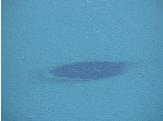 | |||||||||||||
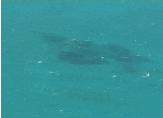 | |||||||||||||
 | |||||||||||||
Above: A few of the more than 20 dark features identified and located by air and then visited on water. Photos: © 2007 by Dr. Lora Little & Dr. Greg Little. | |||||||||||||
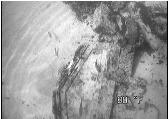 | |||||||||||||
Above: Marble building apex in 28 feet of water. Photos: © 2007 by Dr. Lora Little & Dr. Greg Little. | |||||||||||||
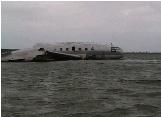 | |||||||||||||
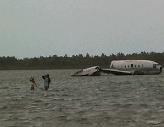 | |||||||||||||
Above: DC-3, which crashed in shallow water on Andros. Photos: © 2007 by Dr. Lora Little & Dr. Greg Little. | |||||||||||||
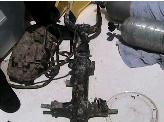 | |||||||||||||
Above: Front landing gear taken from plane found in center of a dark spot 35 miles off Andros. Photos: © 2007 by Dr. Lora Little & Dr. Greg Little. | |||||||||||||
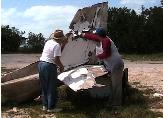 | |||||||||||||
Above: Tail wreckage of plane found at Red Bays in Western Andros. Photos: © 2007 by Dr. Lora Little & Dr. Greg Little. | |||||||||||||
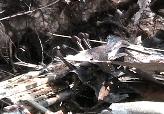 | |||||||||||||
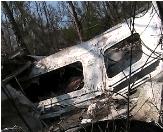 | |||||||||||||
Above: Wreckage of a 2-engine Beech found at Morgans Bluff on Andros. Photos: © 2007 by Dr. Lora Little & Dr. Greg Little. | |||||||||||||